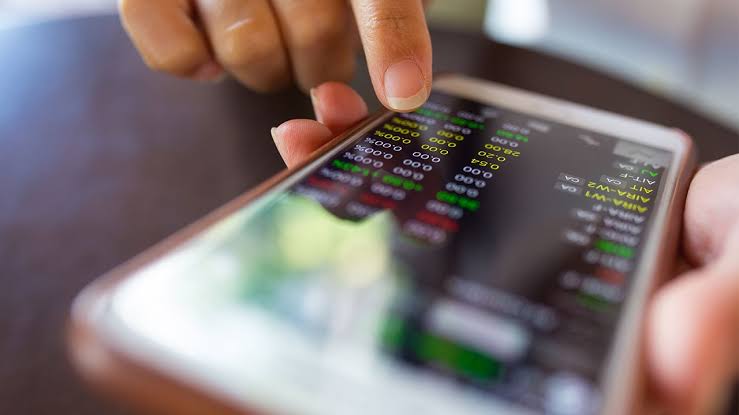Smartphones have revolutionized many aspects of modern life. This includes personal finance and budgeting. With their powerful computing capabilities widespread accessibility. And multitude of apps, smartphones have become indispensable tools for managing finances. This extensive exploration delves into how smartphones have transformed personal finance management. Discussing benefits challenges and emerging trends associated with their use.
Traditionally personal finance management involved manual record-keeping. Physical ledger books. Frequent visits to financial institutions. This process was often time-consuming and cumbersome requiring significant effort. Effort to track expenses. Set budgets and monitor savings. The advent of smartphones introduced seismic shift in this landscape enabling users. Enabling users to manage their finances with unprecedented convenience and efficiency.
One of the most significant impacts of smartphones on personal finance is proliferation of financial management apps. These applications offer wide range of functionalities designed to simplify financial tasks. Budgeting apps allow users to create and track budgets effortlessly. Expense tracking apps enable real-time monitoring of expenditures. Some apps provide comprehensive financial planning tools including investment tracking and retirement planning.
Budgeting apps such as Mint, YNAB (You Need a Budget), and PocketGuard help users set financial goals, categorize expenses, and track spending patterns. These apps often integrate with bank accounts and credit cards, providing users with a holistic view of their financial status. This integration ensures that users can see all their transactions in one place, facilitating more accurate budgeting and financial planning.
Expense tracking apps, like Expensify and Wally, allow users to photograph receipts, categorize expenses, and generate reports. This functionality is particularly useful for individuals who need to manage business expenses or track spending for tax purposes. The ease of recording and categorizing expenses on-the-go reduces the likelihood of missing transactions or overlooking small expenditures.
Investment management apps, such as Robinhood and Acorns, have democratized access to investment opportunities. These platforms enable users to invest in stocks, ETFs, and other securities directly from their smartphones. The availability of educational resources and market analysis tools within these apps empowers users to make informed investment decisions.
Real-Time Financial Monitoring
Smartphones enable real-time financial monitoring, allowing users to keep a constant pulse on their financial health. Push notifications and alerts from banking apps notify users of account balances, transaction activity, and bill due dates. This immediate access helps users stay informed about their financial status and avoid overdraft fees or late payments.
For instance, mobile banking apps allow users to check their account balances, transfer funds, and pay bills directly from their smartphones. Many banks offer features such as mobile check deposits, which eliminate the need to visit a physical branch to deposit checks. The convenience of managing finances from anywhere and at any time enhances users' ability to stay on top of their financial obligations.
Personal finance apps also often include features for setting and tracking financial goals. Users can set goals for savings, debt repayment, or specific purchases and monitor their progress over time. The ability to visualize financial goals and track progress in real-time encourages users to stay motivated and committed to their financial objectives.
Financial Security and Privacy
While smartphones offer numerous benefits for personal finance management, they also raise concerns about financial security and privacy. The digital nature of financial transactions and data storage means that users must be vigilant about protecting their personal information. Cybersecurity threats, such as hacking and phishing, pose risks to sensitive financial data stored on smartphones.
To mitigate these risks, users should adopt robust security practices. This includes using strong, unique passwords for financial apps and enabling two-factor authentication (2FA) where available. Regularly updating apps and operating systems also helps protect against vulnerabilities. Additionally, users should be cautious about sharing personal financial information and avoid accessing sensitive accounts on public Wi-Fi networks.
Financial literacy is another critical aspect of using smartphones for personal finance. While smartphones provide powerful tools, users must understand how to utilize these tools effectively. Financial literacy includes knowledge of budgeting principles, investment strategies, and debt management. Many apps offer educational resources to help users improve their financial knowledge and make informed decisions.
Emerging Trends and Future Prospects
The future of personal finance management is likely to be shaped by ongoing advancements in smartphone technology and emerging trends. Artificial intelligence (AI) and machine learning are expected to play increasingly significant roles in financial apps. AI-powered algorithms can analyze spending patterns, predict future expenses, and provide personalized financial advice.
Additionally, the integration of blockchain technology into financial apps may enhance security and transparency in transactions. Blockchain can enable secure, decentralized financial transactions, reducing the risk of fraud and improving trust in financial systems.
The rise of wearable technology, such as smartwatches, is also expected to impact personal finance management. Wearables can provide users with instant access to financial information, transaction alerts, and budgeting tools. The seamless integration of wearables with smartphones may further enhance the convenience and efficiency of financial management.
Conclusion
Smartphones have undeniably transformed personal finance and budgeting, offering users unprecedented convenience, real-time monitoring, and access to a wide range of financial management tools. While challenges related to security and financial literacy persist, the benefits of using smartphones for personal finance are substantial. As technology continues to evolve, the integration of AI, blockchain, and wearable technology promises to further enhance the capabilities of smartphones in managing personal finances. Embracing these advancements while maintaining vigilance about security will empower individuals to take control of their financial well-being and achieve their financial goals.
